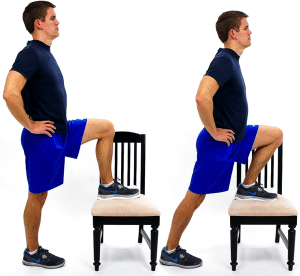Low back pain is probably the most common condition we see here at the clinic. While neck pain, shoulder pain and knee and joint pain are all very common complaints, it’s low back pain that tends to blight more people than anything else. In fact, many patients who come to the chiropractor for an unrelated problem also have a problem with low back pain!
We can certainly treat low back pain in there here and now, but is there anything we can do to stop it coming back? This week, let’s find out.
How common is low back pain anyway?
Low back pain (LBP) is, as you might guess, one of the most common and costly health care problems in society today[1]. In fact, LBP causes more days of absence from work and disruption to everyday life than any other condition.[2] Low back pain isn’t just a problem because it’s debilitating, however – rather, it’s the fact that low back pain tends to reoccur which makes it so disruptive.
How do we prevent low back pain from reoccurring?
Since low back pain does so frequently reoccur its no surprise that there has been some considerable research into trying to keep it at bay. The current approach to preventing a reoccurrence of low back pain focuses on encouraging strategies to prevent re-injury such as performing exercises and stretches aimed at supporting the lower back, as well as teaching good “spinal hygiene”, for example by improving lifting technique.
In cases of chronic low back pain, chiropractors also assist patients in trying to reduce the impact of persistent low back pain when treatment is likely to take longer.
While it’s clear that regular care and appropriate intervention can go a long way to reducing the risk of further low back pain incidents, there is no single treatment protocol which has been shown to be more effective than any other – instead chiropractors provide a tailored package of treatment known as “maintenance care”.
Whatever the issue which eventually causes a flare up, research has demonstrated that low back pain is usually the result of a complex mix of factors including social, behavioural and psychological, meaning that individually tailored interventions are required to treat each patient. This fact also makes it rather difficult to prove which treatment program is best – simply put, its difficult to scientifically test the best prevention protocol, when the best protocol for each patient is always going to be different![3].
What we can say, however, is that a personally tailored form of maintenance care program, can and does reduce the chances of low back pain reoccurring.
What is maintenance care?

Maintenance care is essentially ongoing chiropractic care (usually less frequent than primary care for a painful condition) which seeks to prevent your original complaint from flaring up again. Maintenance care usually includes spinal manipulation, some form of exercise or stretching prescription, and specific advice tailored to your individual circumstances.
As a chiropractic biophysics clinic, complete chiropractic offers more than most when it comes to maintenance centre – through techniques such as the mirror image approach, we also help our patients to optimise factors such as their posture and gait. These tweaks and improvements reduce the risk of further problems, but can also improve your overall quality of life.
How effective is maintenance care?
A 2018 study[4] considered a large sample of 328 participants with a view to establishing how effective maintenance care is. The group of patients selected for the trial ranged from 18 to 65 years old and had all suffered from non-specific LBP – all had also had an early favourable response to chiropractic care. After an initial course of treatment, eligible subjects were assigned to either a maintenance care group or a control group.
The study sought to establish the total number of days with bothersome LBP that each patient experienced within 52 weeks.
The results of the study were clear – maintenance care resulted in a reduction in the total number of days per week with bothersome LBP compared with the control group. During the 12-month study period, the MC group reported 12.8 fewer days in total with bothersome LBP compared to the control group. The study, therefore, concluded that maintenance care is an effective way to help prevent low back pain from reoccurring.
Are you suffering from low back pain?
If you’re suffering from low back pain – don’t! Give us a call and book a consultation at Complete Chiropractic today! Chiropractic is recognised as one of the most effective ways to treat low back pain in the first place, and as we have seen today, is also one of the best ways to prevent it from coming back!
[1] Hoy D, March L, Brooks P, Blyth F, Woolf A, Bain C, et al. The global burden of low back pain: estimates
from the Global Burden of Disease 2010 study. Ann Rheum Dis. 2014; 73(6):968±74. https://doi.org/10.
1136/annrheumdis-2013-204428 PMID: 24665116
[2] Lidgren L. The bone and joint decade 2000±2010. Bull World Health Organ. 2003; 81(9):629. PMID:
14710501
[3] Hoy D, Brooks P, Blyth F, Buchbinder R. The Epidemiology of low back pain. Best Pract Res Clin Rheumatol.
2010; 24(6):769±81. https://doi.org/10.1016/j.berh.2010.10.002 PMID: 21665125
[4] Eklund A, Jensen I, Lohela-Karlsson M, Hagberg J, Leboeuf-Yde C, Kongsted A, et al. (2018) The Nordic Maintenance Care program: Effectiveness of chiropractic maintenance care versus symptom-guided treatment for recurrent and persistent low back painÐA pragmatic randomized controlled trial. PLoS ONE 13(9):e0203029. https://doi.org/10.1371/journal.pone.0203029


